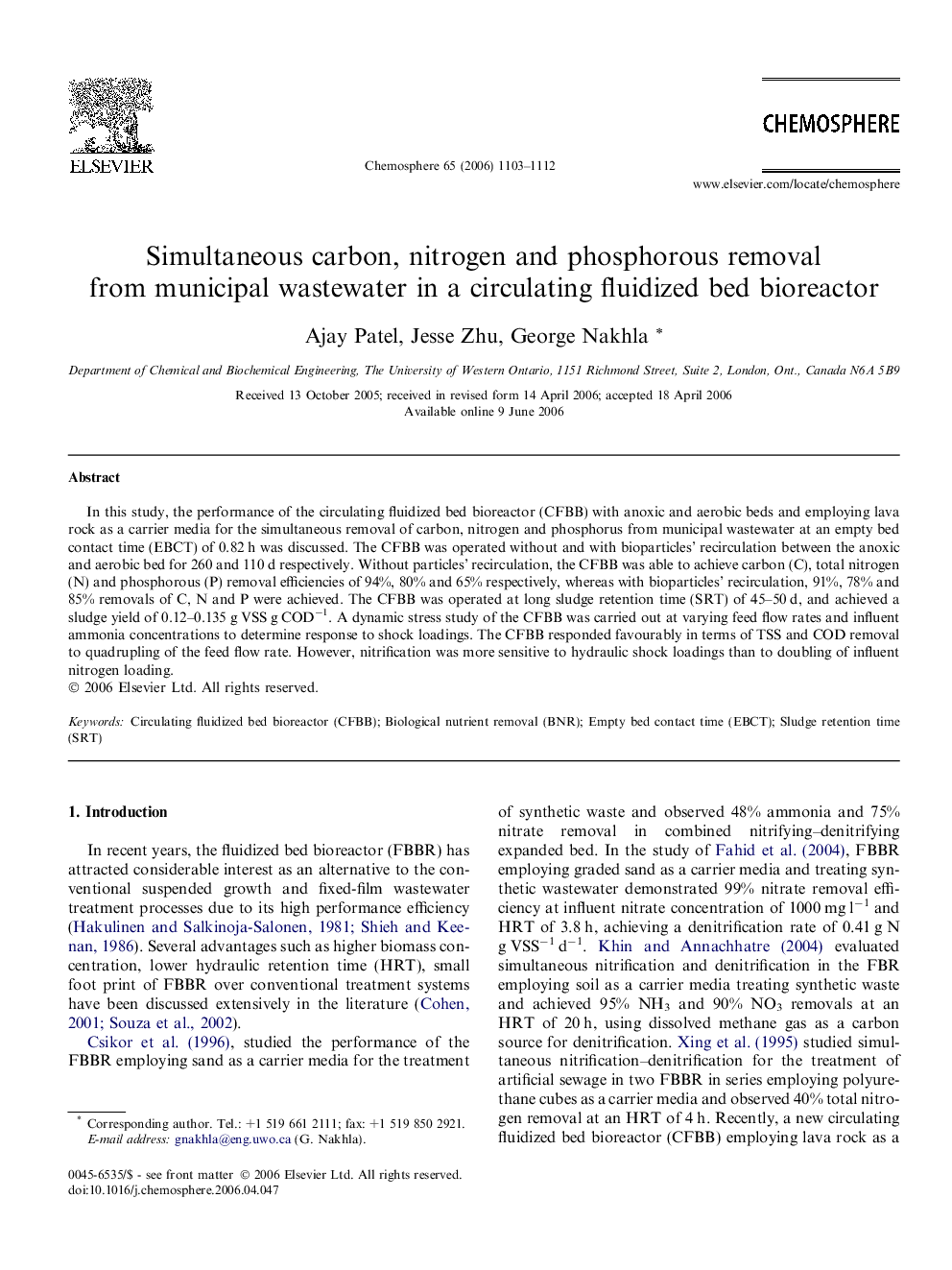| Article ID | Journal | Published Year | Pages | File Type |
|---|---|---|---|---|
| 4416405 | Chemosphere | 2006 | 10 Pages |
In this study, the performance of the circulating fluidized bed bioreactor (CFBB) with anoxic and aerobic beds and employing lava rock as a carrier media for the simultaneous removal of carbon, nitrogen and phosphorus from municipal wastewater at an empty bed contact time (EBCT) of 0.82 h was discussed. The CFBB was operated without and with bioparticles’ recirculation between the anoxic and aerobic bed for 260 and 110 d respectively. Without particles’ recirculation, the CFBB was able to achieve carbon (C), total nitrogen (N) and phosphorous (P) removal efficiencies of 94%, 80% and 65% respectively, whereas with bioparticles’ recirculation, 91%, 78% and 85% removals of C, N and P were achieved. The CFBB was operated at long sludge retention time (SRT) of 45–50 d, and achieved a sludge yield of 0.12–0.135 g VSS g COD−1. A dynamic stress study of the CFBB was carried out at varying feed flow rates and influent ammonia concentrations to determine response to shock loadings. The CFBB responded favourably in terms of TSS and COD removal to quadrupling of the feed flow rate. However, nitrification was more sensitive to hydraulic shock loadings than to doubling of influent nitrogen loading.
